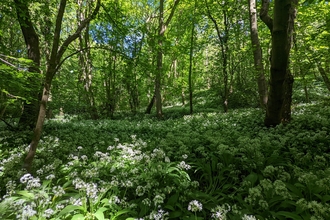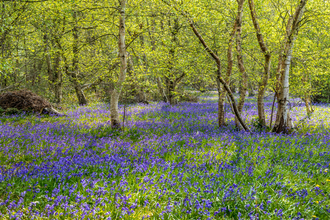Yorkshire’s woodlands are feeling the heat after the driest spring and summer for hundreds of years – adding pressure to already threatened woodland habitats and the wildlife that relies on them.
On its woodland reserves, Yorkshire Wildlife Trust has noticed direct impacts from the drought; from entirely dried-out wet woodlands, to limb drop as trees lose perfectly healthy branches to reduce their drain on resources, and leaves turning autumnal early due to stress. The hot weather has become an additional burden for our woodlands, which are already under tremendous pressure.
According to research from Cambridge University and Forestry England, we have just 50 years to prevent woodland ecosystem collapse – meaning woodlands will no longer be able to support the range of species including birds, mammals and insects essential to their ongoing survival. Our continued loss of ancient and mature woodland is thought to be a key factor for many of our woodland wildlife species – one in ten of which are at risk of extinction.
Dave Powell, Living Landscapes Officer for the Vale of York, said, “The unpredictability of our weather over the past few years has given wildlife far less opportunity to bounce back from periods of more extreme weather. Yorkshire’s woodlands are already struggling from lack of mixed and older habitat, disease, and minimal management – and they are just too scattered and small to successfully support our wildlife.
“The Trust’s woodlands cover an area nearly twice the size of Sherwood Forest and are home to rare species like lesser-spotted woodpeckers, Nathusius’ pipistrelle bats and pied flycatchers, bluebells and stunning autumn colours. Oak trees alone support 2,300 species. But they are at risk from a changing climate, land use change and disease like ash dieback, and require constant care to keep them as healthy habitat and beautiful places to visit.”
Woodlands represent a vital wild space for people as well as wildlife, and are one of the most common urban wild habitats. They are famous for being particularly beautiful in autumn, drawing visitors to enjoy the season as their leaves turn copper and gold, and fungi pop up through the leaf litter. Maintaining healthy and connected wooded spaces is important for people too; according to The Woodland Trust, 90% of people experience wellbeing benefits from spending time in woodlands, and they often generate strong local ties, with communities proud of their local wildlife and unique special highlights.
Dave continues, “Our woodlands are steeped in the history of our land. They are home to ancient trees and ancient techniques that go back centuries, they fill our countryside and cities with colour and birdsong, and there is something enduringly constant about them and their quiet stateliness we cannot afford to lose.
“Tackling the continuous encroachment of invasive species like Himalayan balsam, absorbing the impact of ash dieback disease, and undertaking traditional management practices like coppicing and veteranizing is very expensive and time-consuming task – and if we are to help Yorkshire’s woodlands sink their roots for the future, we need support.”


